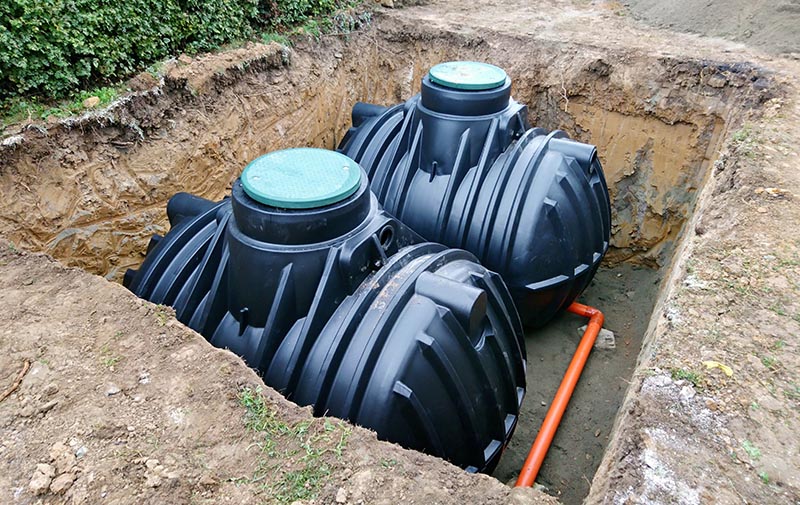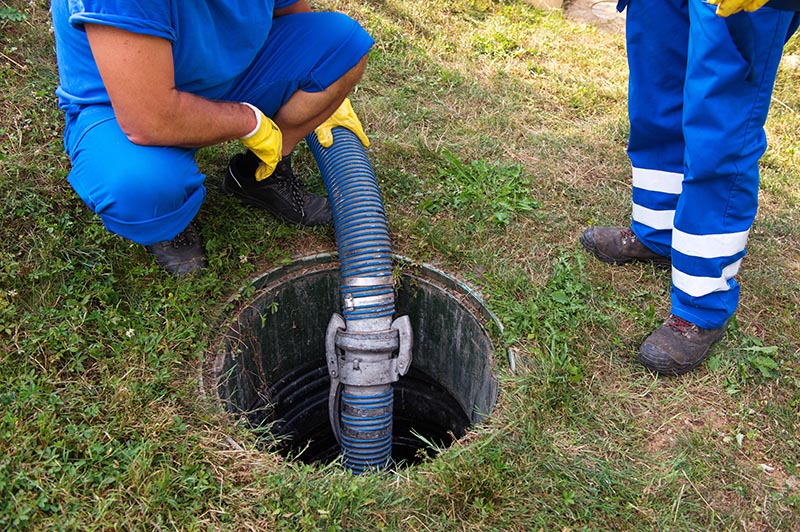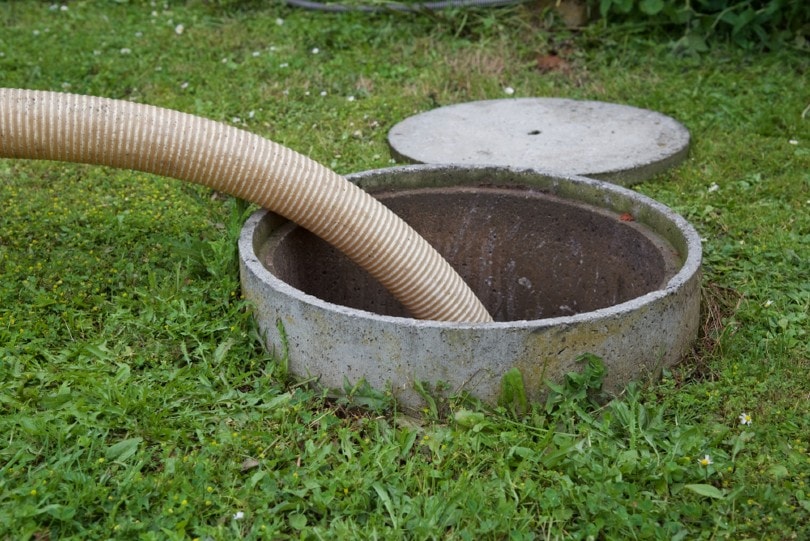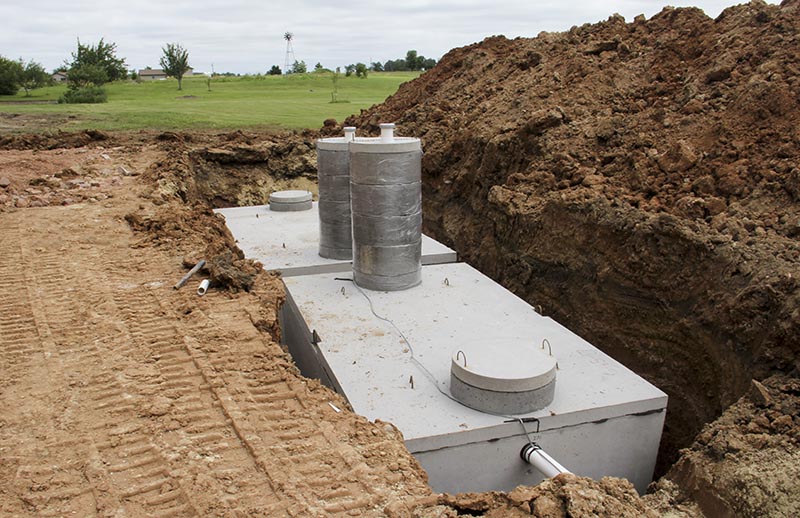How Long Does It Take to Replace A Septic Tank? What To Know!
-
Greg Iacono
- Last updated:

Like any major appliance, a septic tank won’t last forever. If your septic tank is old, breaking down, and needs to be replaced, one of the first questions you’ll have is how long the replacement process takes. Depending on the type, age, and several other factors, it can take between 1 and 8 weeks to replace a septic system.
If your septic system isn’t badly damaged and local regulations are lax, replacing it could be easy and quick. On the other hand, if local ordinances are strict and numerous, or significant damage has occurred to your septic system, replacing it could take as long as 2 months. Plus, some septic systems are easier to replace than others, which is another factor that might affect how long it takes.
If you’re interested in the factors that affect how long it takes to replace your septic system, read on. Below we’ll go into detail about the different systems and proper procedures.
What Are the Major Steps to Replace a Septic System?
Replacing a septic system, even if it’s the tank only, is a process that involves several steps. Some steps can be skipped depending on your situation, but most are mandatory. They include the following;
Testing
Before you can replace your septic system, a contractor will need to run a percolation test to see what’s going on with the soil around your tank. This test takes between 2 and 3 weeks to complete.

Permits
Depending on where you live and the regulations put in place by your local health or environmental department, getting the proper permits to replace your septic system can take a few days or possibly weeks.
Planning
Septic engineers plan how the new septic tank will be installed, prepare the new leach field, and, if necessary, will have to design an entirely new septic system. Depending on how busy your septic engineer happens to be, this could take 1 to 3 weeks.
Tank and System Excavation
For a few days, in most cases, your contractor will be removing the old tank and replacing it with the new one. Also, digging trenches for new pipes and other earth-moving activities may be necessary. This can take anywhere from 1 to 3 weeks, depending on the situation and the climate when the replacement is performed. It takes longer in winter or the rainy season.
Tank Installation
Depending on the type of tank you choose, the tank installation is usually one of the fastest steps in the replacement process. In most cases, it takes a day, but depending on the weather and other factors, it can take upwards of a week to finish.
How Do You Know When to Replace your Septic Tank?

A properly maintained septic system should last between 20 and 30 years. If yours is reaching that age, there are several signs you’re likely to see in and around your faucets, sinks, toilets, and drains. When you do, you’ll know it’s time to replace your tank or the entire system. They include the following:
- Drains in your bathtubs, showers, and sinks drain much slower than they used to.
- On the outside of your septic tank, there are damp spots that stay damp. This indicates that the septic tank is leaking.
- Sewage starts to back up into your drains, including the toilets, sinks, and showers.
- The grass around your septic tank is lush and green compared to the rest. That means sewage is escaping and nourishing the grass.
- When standing near your septic tank, you smell that unmistakable sewage smell.
How Often Do Septic Tanks Need to be Replaced?
The best news about septic tanks and systems for most homeowners is that they won’t have to consider replacing their septic system for 20 to 30 years. Several things can reduce those numbers, however, including the factors below.
The Household Products You Use
Septic tanks work partly because of “good” bacteria in their tanks. This bacteria breaks down waste and allows it to flow into the drain field. However, some household products are highly toxic and destroy the beneficial bacteria your septic tank needs, affecting the drain field, causing backups, and lowering the systems’ useful life.
The Number of People Using the Septic System
The size of the septic tank you choose is usually based on two factors: the number of bedrooms in your home and assuming that 110 gallons per bedroom will be used per bedroom in a typical day. If you use much more water for whatever reason, it can overload and overwork your septic system, causing it to fail. These types of failures can significantly reduce your septic system’s lifespan.
The pH of the Soil Surrounding Your Septic System
Acidic soil is much worse for a septic tank and system than alkaline soil. Acidic groundwater will eat through a concrete septic tank and cause problems severe enough to reduce your septic system’s lifespan significantly. Acidic soil damages steel, plastic, and fiberglass septic tanks even more.
How Well You Maintain Your Septic System Over The Years
Diligent maintenance of your septic system is one of the best ways to ensure it works for as many years as possible. That includes maintaining the drain field, pumping the tank about once every 2 years, and, when called for, using biological additives to help the “good” bacteria stay healthy and thrive.
Which Septic Tank is Considered the Best?

You can choose several types of septic tanks when replacing your septic system, including those made of fiberglass, steel, and heavy-duty plastic. However, from our research, the best type is a precast concrete septic tank. Below are a few reasons for selecting precast concrete.
- Precast concrete septic tanks won’t float out of place during a flood. They resist buoyant forces better than any septic tank.
- A precast concrete tank won’t collapse when being pumped to empty.
- Installing a precast concrete tank is much easier and faster than most other tank choices.
- Concrete is environmentally safe, non-toxic, and made from natural materials.
- It’s incredibly difficult to damage a precast concrete septic tank when installing it. Plastic tanks are well-known for installation problems causing tank failures.
- Precast concrete tanks don’t rust like steel.
- On-site preparation is significantly lower with a precast concrete tank.
- Precast concrete septic tanks can be placed where cars will drive over them. This placement could never be done with a plastic septic tank.
- A precast concrete tank gets stronger the longer it’s in the ground and is one of the most durable tank materials available.
Consult a PLUMBING expert
Find a plumbing specialist in your area, and get free, no-commitment estimates for your project.

Final Thoughts
Depending on several factors, replacing a septic system can go quickly or slowly. A simple tank replacement could take a week or more, while a whole system replacement might take up to 2 months. Factors like soil condition, damage, permits, and weather must be considered. You can speak to your contractor to determine how long yours will take and always remember that situations change, sometimes drastically, as the process unfolds.
Featured Image Credit: Hamik, Shutterstock
Contents

